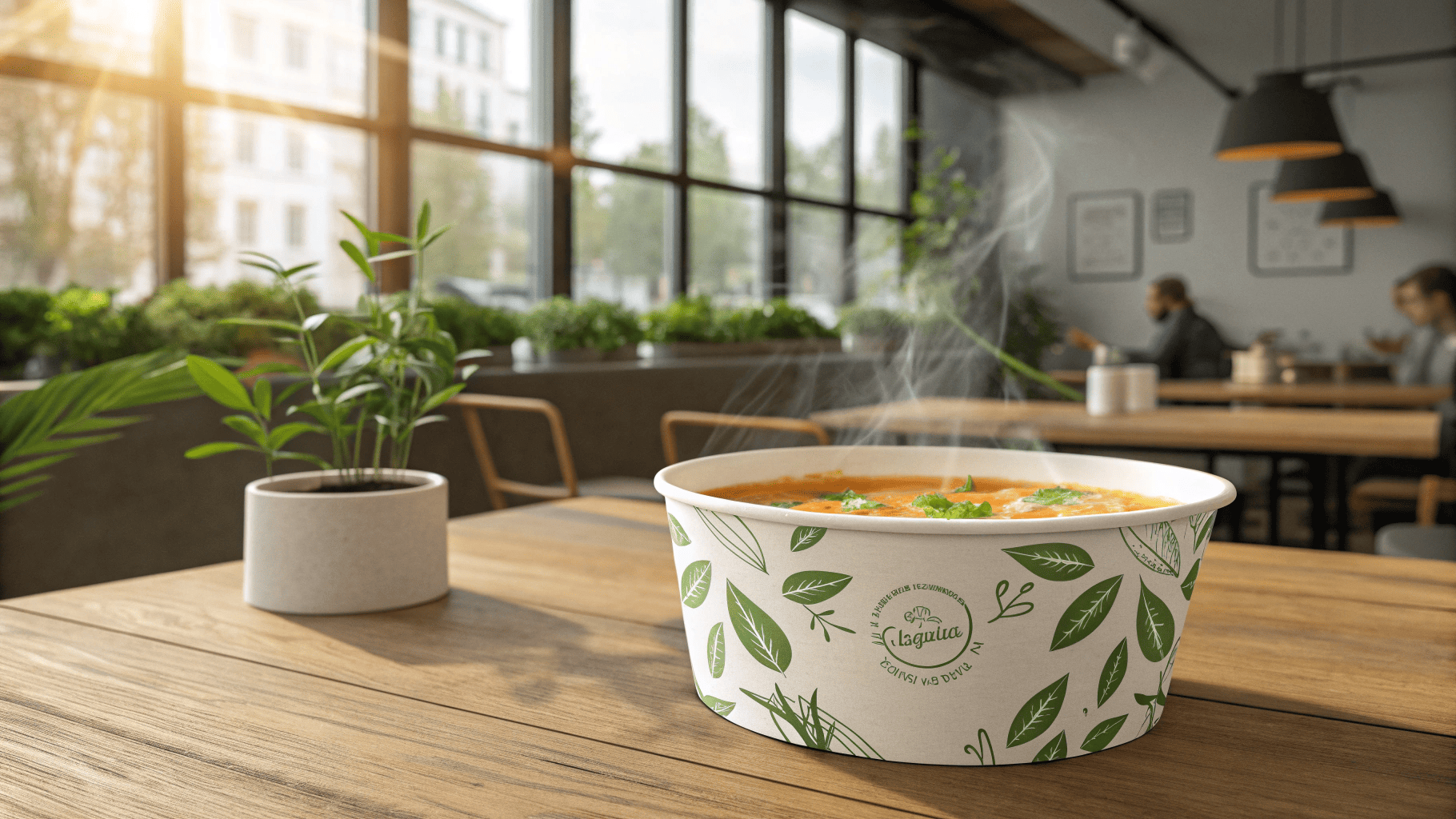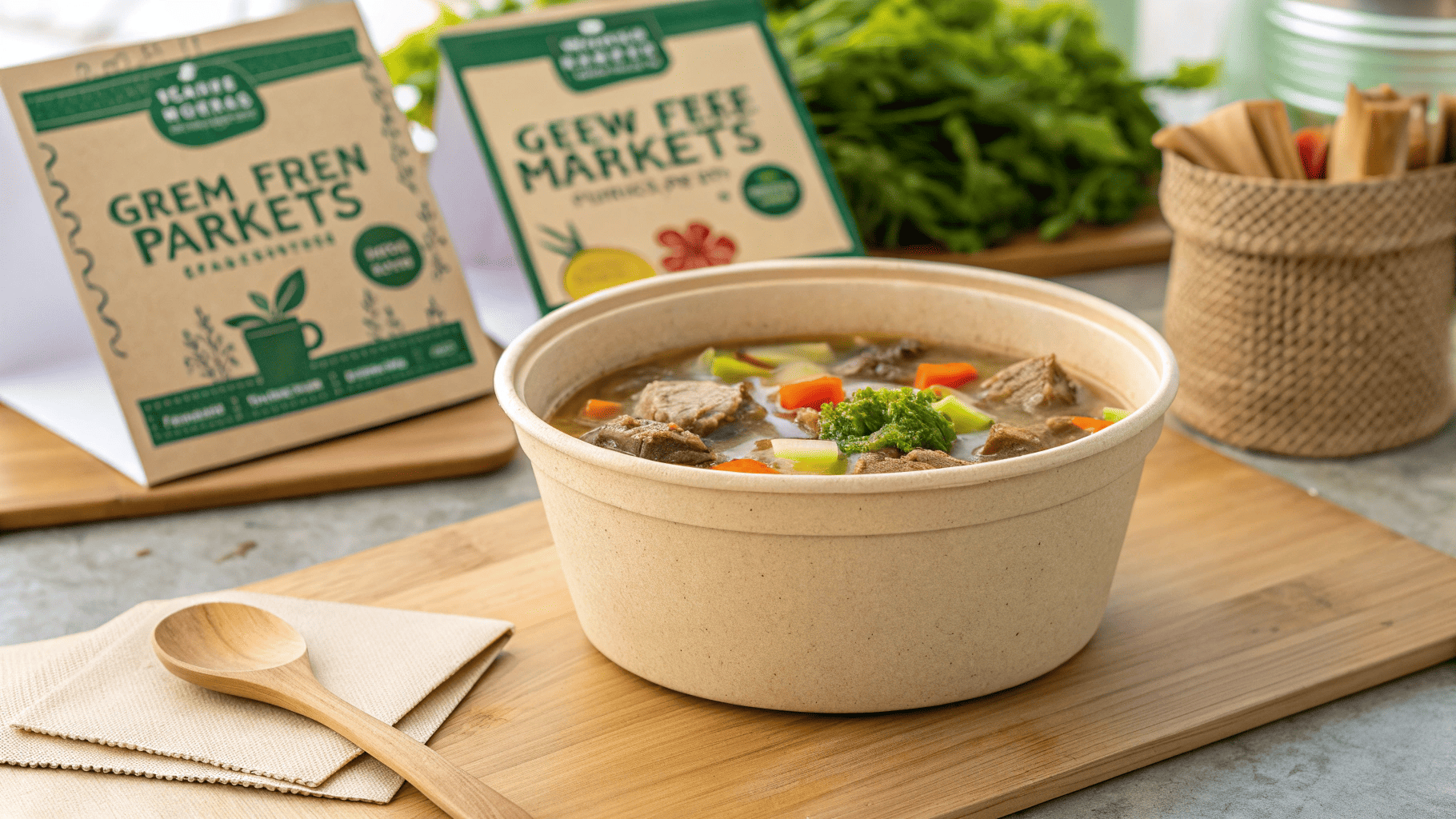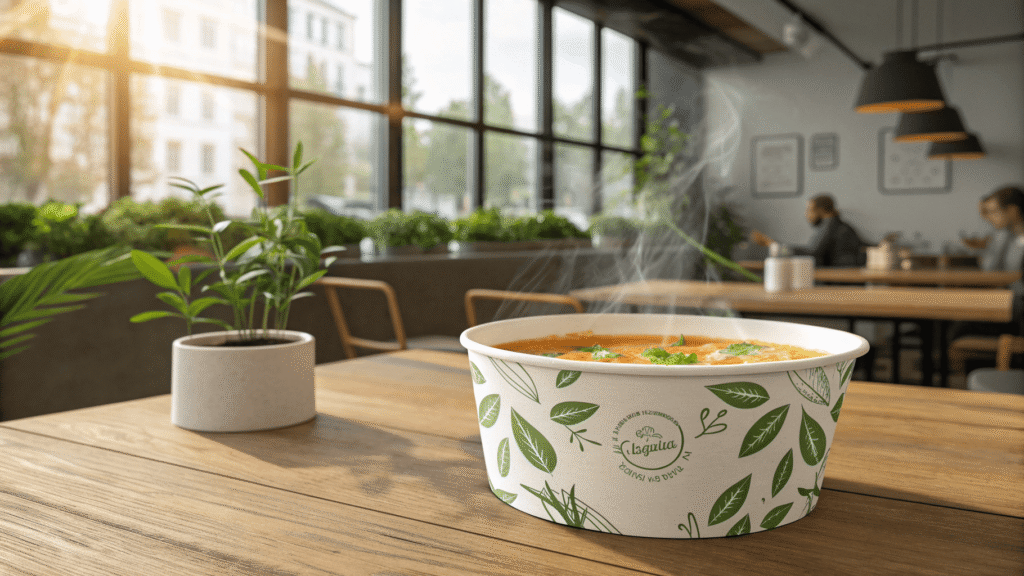You're trying to choose a soup bowl, but the options are overwhelming. You worry that the wrong choice could leach harmful chemicals into your food, putting your customers and your reputation at risk.
The safest materials for disposable soup bowls are food-grade paper1 with a PE or PLA coating2, polypropylene (PP) plastic3, and sugarcane bagasse4. These materials are all stable at high temperatures and will not release harmful substances into hot soup when sourced from reputable manufacturers.

Over my 20 years in this industry, I've seen a lot of materials come and go. The one constant is that safety is non-negotiable5. It's not just about a bowl that doesn't leak; it's about a bowl that gives you complete peace of mind. Choosing a material means you're placing trust in its integrity. So, how do you know which materials have earned that trust? Let's dive into the specifics so you can make an informed, safe choice every single time.
Are compostable bowls a good choice for hot soup?
You want to make an eco-friendly choice6, but you're worried compostable bowls7 might not be strong or safe enough for hot soup. A soggy, collapsing bowl is the last thing you need.
Yes, high-quality compostable bowls 7 are an excellent and safe choice for hot soup. Bowls made from sugarcane bagasse4, often lined with PLA, are heat-resistant8, sturdy, and free from harmful chemicals, offering a fantastic combination of sustainability and performance for serving hot foods.

The word "compostable" used to make people think of flimsy, unreliable products. That's no longer the case. I worked with a health-conscious cafe owner who was hesitant to switch from plastic. She was worried that bagasse bowls would absorb the broth and get soft. I sent her a case to test, and she put her hottest, oiliest soup in one and let it sit for over an hour. It held up perfectly. Today, her customers constantly praise her for using sustainable packaging. Modern compostable materials are engineered for performance. Let's compare the top contenders for the "safest bowl" title.
Comparing Today's Safest Bowl Materials
| Material | Heat Resistance | Safety & Health Profile | My Insider Take |
|---|---|---|---|
| Sugarcane Bagasse | Good (up to 100°C / 212°F) | Excellent. Made from natural plant fiber, no bleach or heavy metals. Fully compostable and non-toxic. | This is my top recommendation for eco-conscious brands. It feels premium and tells a great sustainability story. Ensure it has a proper waterproof coating (like PLA) for very hot, liquid-heavy dishes. |
| Coated Paper (PE/PLA) | Excellent (up to 110°C / 230°F) | Excellent. Food-grade paper with a stable, inert lining. No taste or chemical transfer9. | This is the reliable industry standard. Lightweight, great for printing, and performs flawlessly. The only risk comes from unknown suppliers using recycled pulp or non-food-grade coatings. Always buy from a certified source. |
| PP Plastic (#5) | Excellent (up to 120°C / 248°F) | Good. Very heat-stable and does not contain BPA. It's a safe and durable plastic option. | While safe for heat, its environmental footprint is a major downside. It's not easily recyclable everywhere and isn't biodegradable. It feels less premium than paper or bagasse options. |
Why are some disposable bowls not food safe for hot soup?
You see foam and wax-coated bowls for sale everywhere, often at very low prices. It's tempting to think they're an acceptable, cheap option. But this bargain could come at a very high cost.
Some bowls are unsafe because they are made from materials with low melting points or without a proper liquid barrier10. Wax-coated bowls melt in heat, while foam bowls can deform and leach chemicals. Uncoated paper simply falls apart when wet, posing an immediate spill hazard.

Knowing what not to use is just as important as knowing what to use. The risks associated with these cheap materials are real and should never be ignored. I once got a call from a frantic event caterer whose foam bowls were visibly misshapen from the hot chili they were serving. They were worried about what chemicals were being released into the food. We had to rush-ship them a pallet of proper PE-coated paper bowls overnight. It was a costly lesson for them. To avoid a similar emergency, you must recognize and steer clear of these hazardous materials.
The Unsafe List: Materials to Avoid for Hot Soup
- Wax-Coated Paper Bowls: These are only for cold applications like ice cream. The wax lining starts melting at around 50°C (122°F), far below the temperature of hot soup. When it melts, it contaminates the food with a waxy taste. Worse, if cheap industrial paraffin wax is used, it can contain harmful impurities.
- Foam (EPS) Bowls: Expanded polystyrene is not a good choice. Its heat resistance is low (around 60-80°C or 140-176°F), and it can soften, deform, and potentially release styrene monomers when it comes into contact with very hot or oily foods. It's also an environmental disaster, taking centuries to break down. Stick to safer, more modern alternatives.
Conclusion
The safest bowls are made from sugarcane bagasse4, coated paper, or PP plastic. Always avoid foam and wax-coated bowls for hot liquids to ensure food safety and quality.
Understanding food-grade paper helps ensure safety and quality in disposable bowls, crucial for maintaining customer trust. ↩
Learn about PLA coating's role in ensuring the safety and integrity of disposable bowls, especially for hot foods. ↩
Discover the safety profile of PP plastic, a common choice for hot food containers, and its environmental impact. ↩
Explore the advantages of sugarcane bagasse, a sustainable option that offers both performance and eco-friendliness. ↩
Understanding the importance of safety in food service materials can protect your customers and your reputation. ↩
Explore the criteria that define eco-friendly disposable bowls, helping you make sustainable decisions. ↩
Find out why high-quality compostable bowls are a reliable choice for hot soup, balancing safety and sustainability. ↩
Understanding heat resistance in materials helps you choose the right disposable soup bowl for hot liquids. ↩
Learn about chemical transfer risks in food packaging to ensure safe and healthy dining experiences. ↩
Understanding the role of a liquid barrier can help you select safe and effective disposable bowls for hot foods. ↩
